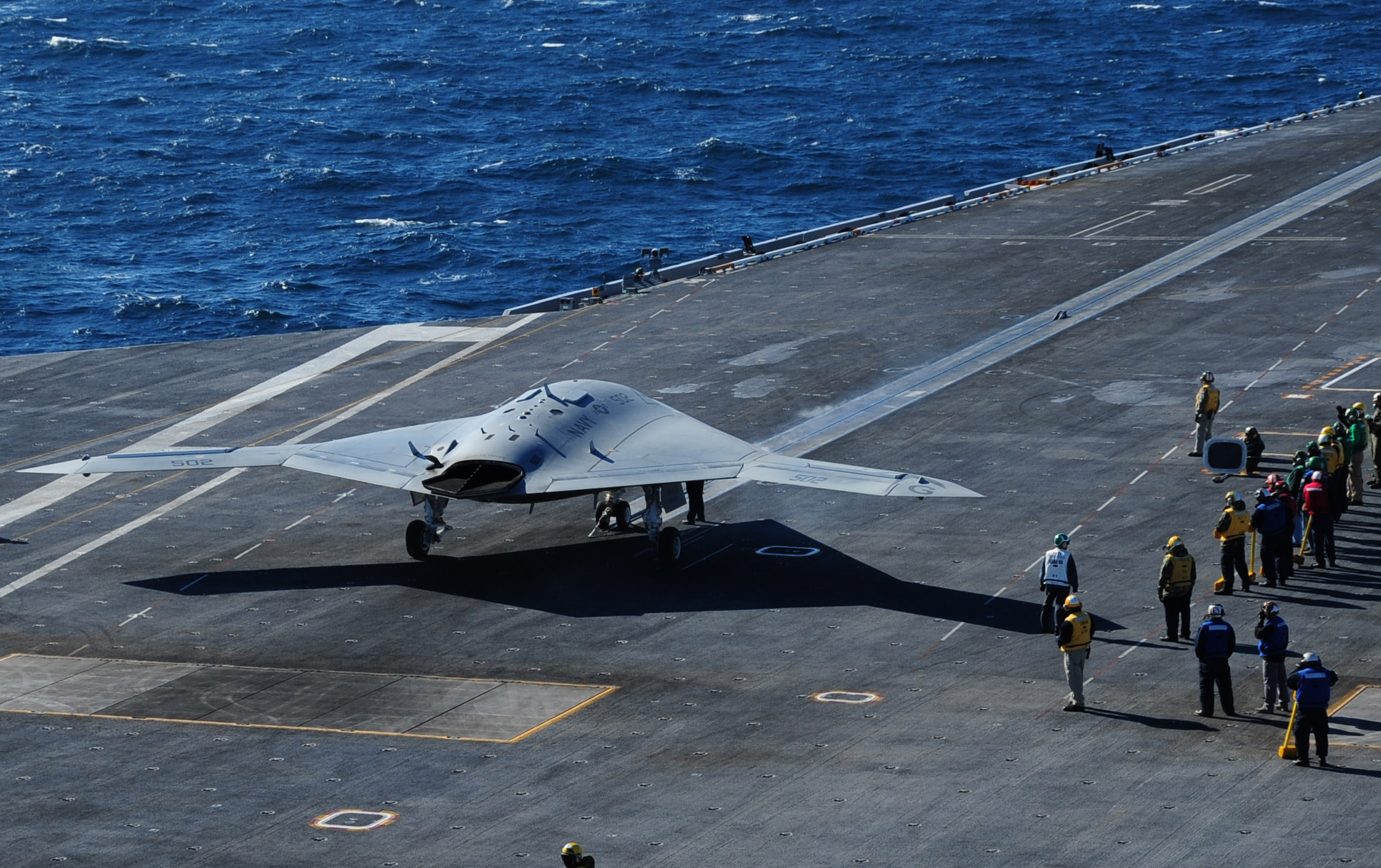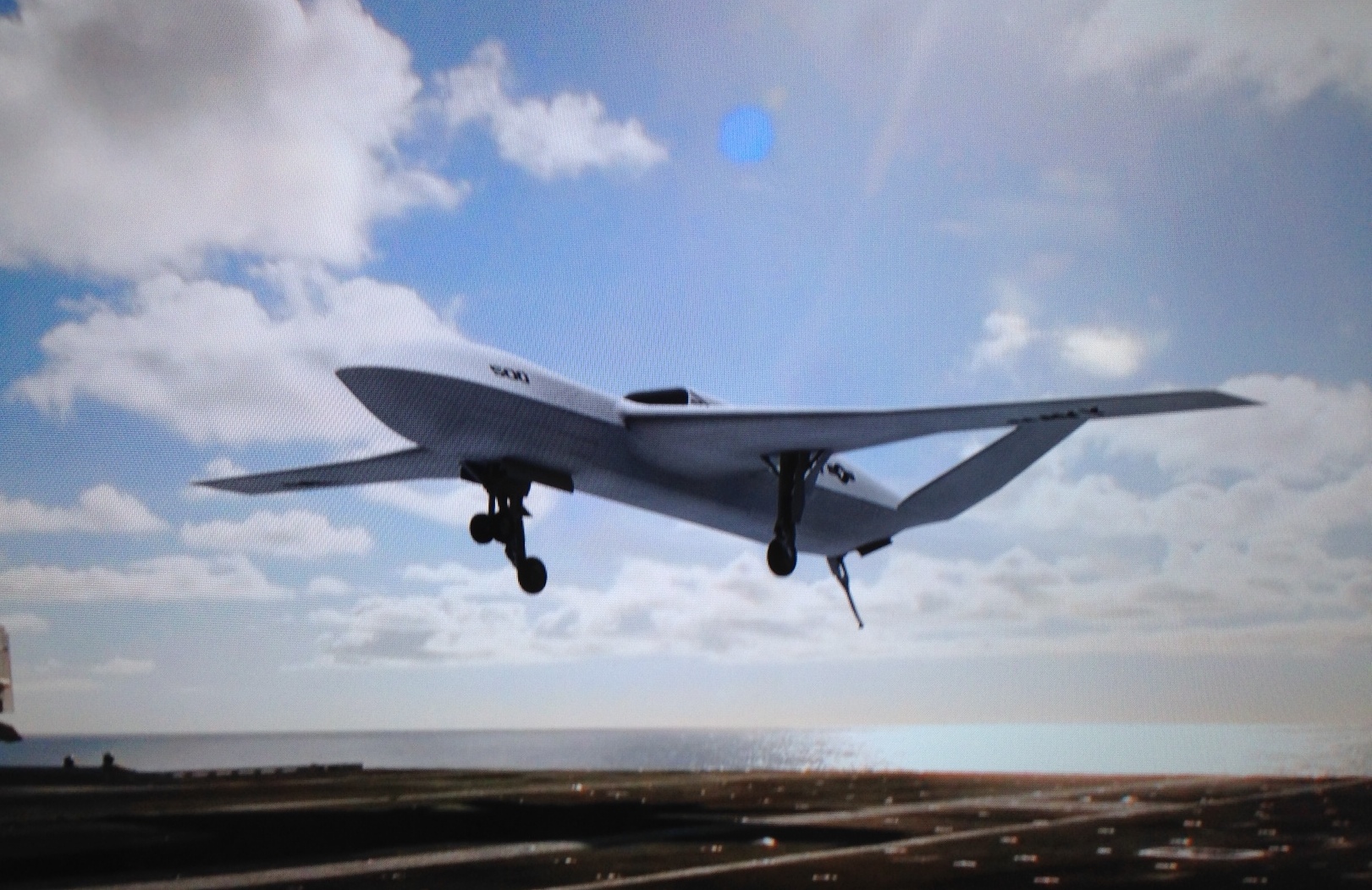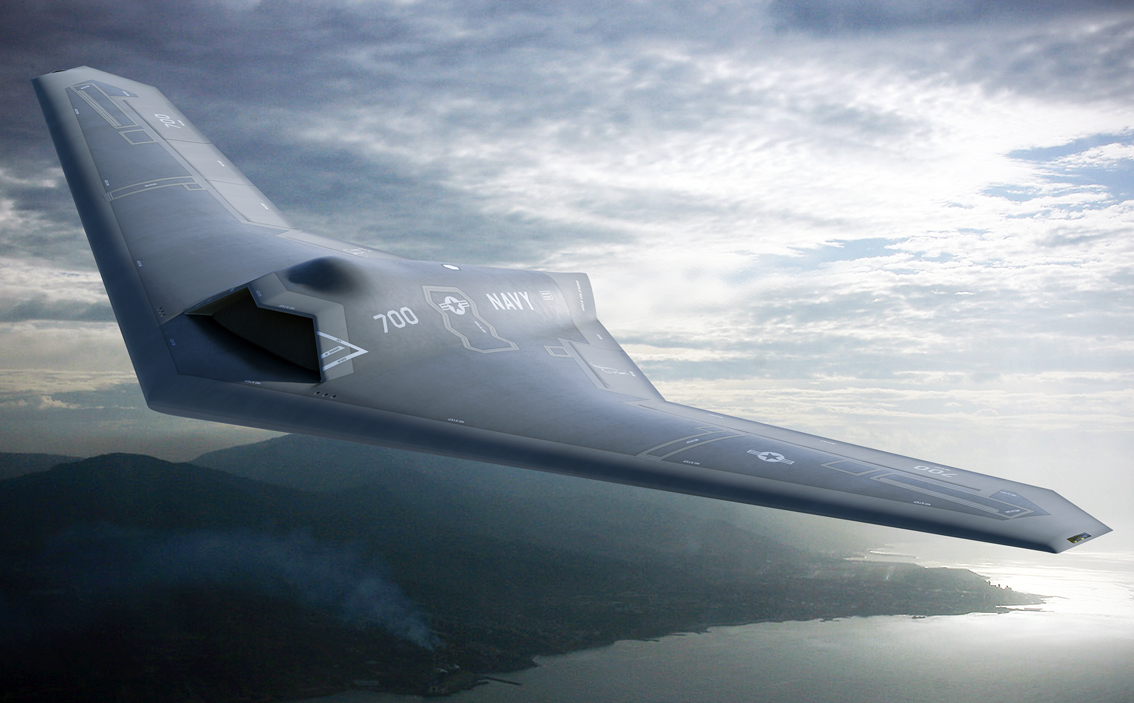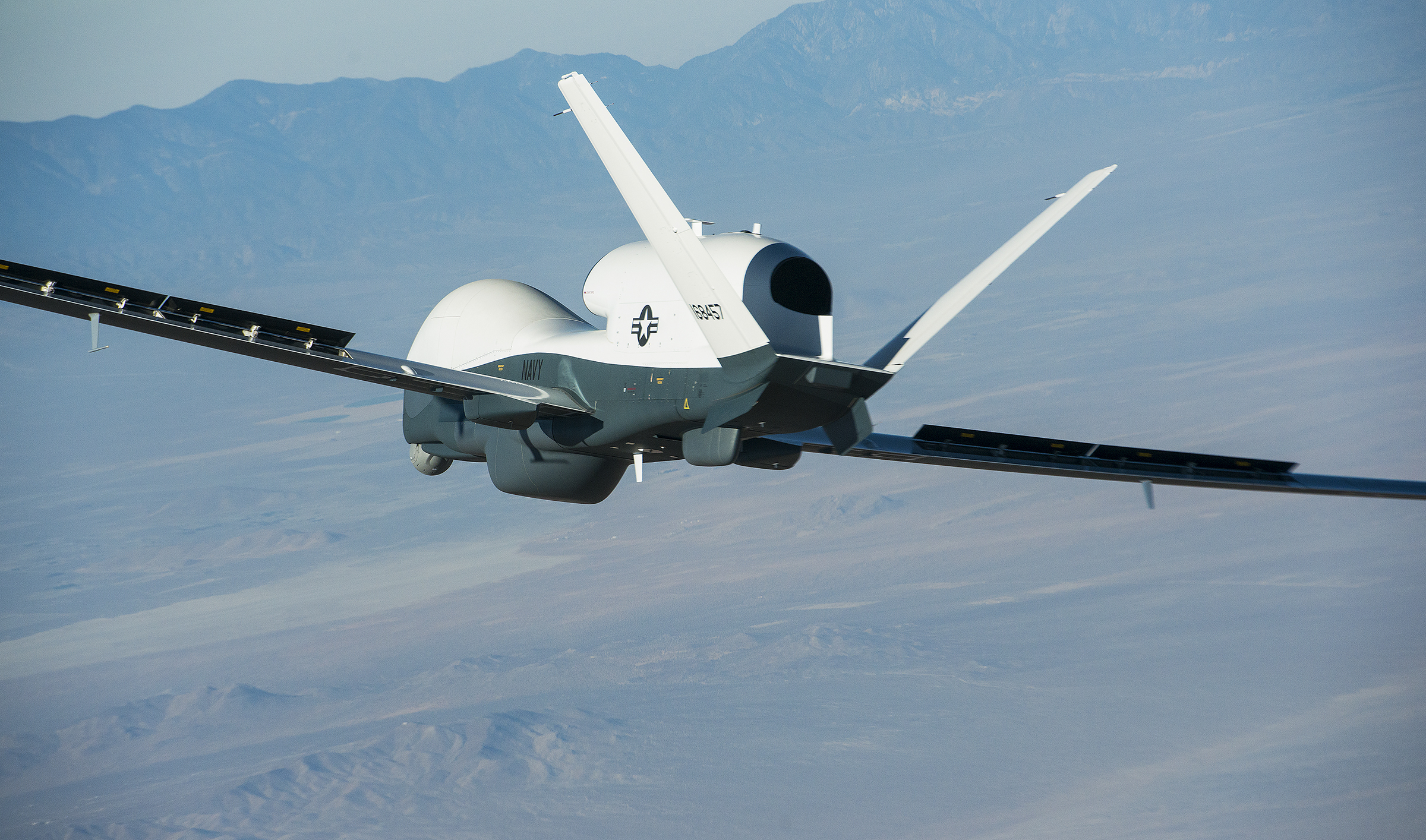The US Navy’s Angry Birds
X-47B UCAS
In
Login if you are already registered
(votes: 1, rating: 5) |
(1 vote) |
PhD in Political Science, RIAC expert
The Russian International Affairs Council (RIAC) website has already raised the issue of naval unmanned aerial vehicles (UAVs). The American Unmanned Carrier-Launched Airborne Surveillance and Strike (UCLASS) programme is worth examining in more detail, since it is the most curious and potentially promising programme in the field of “strategic” naval UAVs. The success of the X-47 demonstrator vehicle highlights the substantial controversy over the role, objectives and features of UCLASS. The future of this programme is of no little significance for Russia’s national security.
The Russian International Affairs Council (RIAC) website has already raised the issue of naval unmanned aerial vehicles (UAVs). The American Unmanned Carrier-Launched Airborne Surveillance and Strike (UCLASS) programme is worth examining in more detail, since it is the most curious and potentially promising programme in the field of “strategic” naval UAVs. The success of the X-47 demonstrator vehicle highlights the substantial controversy over the role, objectives and features of UCLASS. The future of this programme is of no little significance for Russia’s national security.
From UNSA to UCLASS
Back in 1998 the US Navy carried out preliminary research in conjunction with Boeing, Northrop Grumman and Lockheed Martin into Unmanned Naval Strike Aircraft (UNSA). In 1999 the Navy linked its Naval Unmanned Combat Air Vehicle (N-UCAV) programme with the UCAV programme of the Air Force and the US Defense Advanced Research Projects Agency. In December 2002 the Office of the Secretary of Defense instructed the Air Force and Navy to start a joint programme to develop a combat UAV.
The Joint Unmanned Combat Air Systems (J-UCAS) programme started in 2003. But in 2006 the air force abandoned it in favour of developing a new strategic bomber, and the Navy continued working on its own. The programme was renamed to N-UCAS. Part of it was to develop a vehicle to demonstrate the technologies: UCAS-D.
In 2007, the Northrop Grumman corporation, with the X-47B UAV, which had been involved in the programme since the days of UNSA, was selected for UCAS-D. Boeing competed with the company unsuccessfully with the X-45C. In February 2011 the X-47B completed its first flight, and in May 2013 its first deck start from an aircraft carrier, and then in July of the same year its first deck landing on an aircraft carrier. In August 2014 the X-47B successfully completed its next stage of testing: joint deck start and landing on an aircraft carrier with a manned F/A-18E fighter was achieved.
In 2010 the N-UCAS programme was again renamed, this time to UCLASS (Unmanned Carrier-Launched Airborne Surveillance and Strike). A request for information (RFI) was sent to the programme participants. June 2013 saw the start of the preliminary evaluation stage for the UCLASS programme, which involved Boeing, Lockheed Martin, General Atomics and Northrop Grumman.
An important feature of UCLASS is that unlike the majority of other remote-controlled UAVs with a greater or lesser degree of automation, it is autonomous.
A preliminary request for proposal (RFP) was published in April 2014. The final RFP is expected in September of this year, once the US Navy Air Systems Command’s UCLASS concept has been approved by Deputy Secretary of Defense Robert Work and the Defense Acquisitions Council, headed by Frank Kendall, Under Secretary of Defense for Acquisition, Technology and Logistics.
UCLASS is due to achieve initial operational capability (IOC) by 2021. It is planned to have 4–6 such UAVs on an aircraft carrier, and the Navy would like to obtain up to 24 vehicles even before IOC is achieved. It remains unclear whether these UAVs will be combined into a separate squadron or added to early radar-locating warning or fighter squadrons.
UCLASS requirements
The N-UCAS programme was originally intended to create a stealth UAV capable of striking stationary and mobile targets and to undertake reconnaissance deep in enemy territory in the context of air defence countermeasures. It was also assumed that it would enable an aircraft carrier to lie at a considerable distance (on the order of 1,600 km) from the shore, beyond the reach of anti-ship missiles and land-based aircraft. At that time this was done against the background of China’s growing military capability and ambitions. Now, in the “post-Crimea era”, Russia too is gradually retaking its place among the USA’s likely adversaries.
An important feature of UCLASS is that unlike the majority of other remote-controlled UAVs with a greater or lesser degree of automation, it is autonomous. This means that it performs the majority of its actions from take-off to landing independently, reacting autonomously to the changing circumstances in accordance with pre-programmed algorithms. At the same time the very ability of UCLASS and other UAVs to use their weapons independently, without prior human approval, raises questions of a legal and moral nature, and also provokes strong disapproval on the part of some human rights advocates.
In 2011–2012 the Navy and the Office of the Secretary of Defense, who has a serious influence on the programme, rejected the “strong option” in favour of the cheaper “weak option”. Substantial changes were made to the UCLASS requirements. At the same time there was an emphasis on reconnaissance functions in the context of a lack of perceptible response from an adversary. The Navy’s priority is also to obtain the greatest possible quantity of UAVs in a relatively short time. The Office of the Secretary of Defense wanted to make UCLASS’s main objective anti-terrorism, and also to reduce the programme’s costs in the context of defence budget sequestration.
A more sophisticated UAV could cost more than 100 million dollars. The Navy is worried about the technological risks and its inability to afford a more expensive system.
The requirements for the UCLASS “weak option” included the possibility of two trial flights from an aircraft carrier at a distance of about 1,100 km or one at a distance of 2,200 km without serious resistance from an enemy and without the need for refuelling, or of striking a target up to 3,700 km away with JDAM and SDB II bombs with an aggregate mass of about 450 kg in an internal compartment. The Navy was particularly interested in the possibility of the UCLASS air presence beyond the end of the standard 12-hour flight day. It is proposed that keeping one UCLASS in the air on a 24/7 basis should not cost more than 150 million dollars (excluding R&D and operation). Two UAVs with a flight time of 14 hours are required, which therefore gives a maximum cost of 75 million dollars for one UAV system.
In December 2013 Rear Admiral Mike Manazir, the Director of Air Warfare at Navy, said that the strike and reconnaissance UCLASS should have a maximum take-off weight of 32–36 t (the X-47B’s is about 20 t, and the F/A-18E/F’s is about 30 t). It is planned to equip the UCLASS with an in-flight refuelling system, and also to assign to it the additional function of tanker aircraft (able to provide up to 9 t of fuel if it’s flying time is reduced to 7.5 hours). This will make it possible to free up some F/A-18E/Fs, which are regularly detached to perform this function, which is not its primary role.
Judging by Manazir’s statements, this was all about some kind of hybrid of the “weak” and “strong” options. There was talk of possibly using UCLASS as a remote-control missile carrier (controlled from an F-35C or an E-2D) for AMRAAM air-to-air missiles, and of the capability to operate in disputed air space and the use of stealth technologies, but on a lesser scale than in the F-35C.
Nevertheless, publication of the preliminary RFP was postponed to April 2014 because the US Navy’s Air Systems Command could not decide on the requirements for UCLASS. This was primarily to do with the balance between capabilities and cost. In the preliminary project evaluation the UAV worked out at a cost of 35–50 million dollars. A more sophisticated UAV could cost more than 100 million dollars. The Navy is worried about the technological risks and its inability to afford a more expensive system.
The efforts to create a “strong option” UCLASS ran into serious bureaucratic and cultural resistance from representatives of US naval aviation who were afraid of competition from UAVs.
Information appeared in July 2014 to the effect that the Navy had changed the UCLASS requirement for a third time. This time it was about a UAV which would operate predominantly over the sea, not the land. In the first stage it would have to fulfil reconnaissance and attack objectives in the context of absence of active resistance from an enemy in the open sea, and then in more dangerous coastal regions, and also to fight enemy surface ships.
In addition, the UAV would have to be capable of carrying a little less than 3 t on two external mounting points in addition to 450 kg in an internal compartment. The maximum flight time remained at the level of 14 hours. The Navy believed that this figure was optimal in terms of the cost-efficiency criterion, since it is proposed that with a flight time of 8 hours the cost of the device will rise fourfold owing to the increase in the quantity of UAVs, the need for in-flight refuelling, and a range of other reasons.
The stealth role for UCLASS was reduced in the new option. At the same time there was talk of possibly of the UAV using electronic warfare systems. UCLASS is expected to work with the F-35C, the F/A-18E/F and the E-2D as part of the unified concept of Naval Integrated Fire Control-Counter Air (NIFC-CA).
The efforts to create a “strong option” UCLASS ran into serious bureaucratic and cultural resistance from representatives of US naval aviation who were afraid of competition from UAVs. The UCLASS specifications were sacrificed to the programme to create a new carrier-based fighter to replace the F/A-18E/F under the F/A-XX programme. Everything hinges on the fact that the Navy cannot implement the F-35C, F/A-XX programmes and the “strong option” UCLASS at the same time. Judging by publicly available information, there is no talk of a supersonic version of UCLASS (similar to the land-based Taranis UAV made by BAE Systems) with the capability for independent use of air-to-air missiles and with the capability to really compete with manned fighters, owing to the cost, which is beyond the Navy’s reach.
Many see Northrop Grumman as the favourite in the future contest between the four players in the UCLASS programme, thanks to the success of the X-47B. Nevertheless, the others may hold trumps of their own, especially General Atomics, whose Sea Avenger is closer than the others to meeting the idea of a relatively cheap “weak option” with limited application of stealth technologies.
Congress’s stance
The situation with UCLASS is giving rise to intense dissatisfaction in the US Congress. In 2013 the congressmen denied the Navy’s permission to acquire more than 6 UAVs before obtaining approval for initial low-volume production. In 2014 the Armed Services Committee of the House of Representatives made an amendment to the Fiscal Year 2015 National Defense Authorization Bill, freezing funds for the UCLASS programme until the Pentagon submitted a comprehensive study of UCLASS requirements to Congress. Later the Senate Appropriations Committee called on the Navy to send the parties involved in the programme a final version of the RFP only once the final requirements for the UAV had been approved.
The most ardent supporter of the “strong option”, one of the chief apologists for sea power among the members of Congress is the Republican Randy Forbes, Chairman of the House Armed Services Committee’s Seapower and Projection Forces Sub-Committee (http://nationalinterest.org/feature/uclass-the-future-naval-power-projection-10889). Recent congressional hearings have shown that the expert community is also inclined towards the “strong option”. It is noted that the proposed “weak option” duplicates functions which can be fulfilled by other manned and unmanned assets of the Navy and Air Force, primarily the land-based MQ-4C reconnaissance UAVs.
The Navy notes that the “weak option” UCLASS will be gradually strengthened and modified thanks to its “open architecture”. Some authoritative experts challenge this, saying that in principle the UAV, which is designed for long reconnaissance flights in undisputed air space, cannot evolve into a long-range attack UAV operating in the enemy’s air defence zone, owing to a number of design features of its fuselage and engine.
According to Robert Martinage of the Center for Strategic and Budget Assessments, for the sake of 14 hours in the air without refuelling, the Navy has sacrificed stealth capability and the capacity of the internal weapons bay. Martinage advocates rejection of the “weak option” in favour of the “strong” and making a number of changes to the specification. In particular, it is proposed that the flight time without refuelling be reduced from 14 to 8–10 hours (24–48 hours with in-flight refuelling), that a low EPR (Electron paramagnetic resonance) be achieved in a wide range of radiation, and that the capacity of the internal armament compartment be increased from 450 to 1,350–1,800 kg. In addition, it is proposed that it be made possible to use a wide range of long-range weapons, for example JSOW bombs, JSM air-to-ground missiles and the future LRASM anti-ship missiles.
However, Vice Admiral Paul Grosklags, Principal Military Deputy Assistant Secretary of the Navy for Research, Development and Acquisitions, believes that such a project is “not technically achievable today”.
Bringing such a UAV into service in an adequate quantity fits well with the concept of “air-sea operations” and represents a tangible threat for Moscow and Beijing.
Robert Martinage also believes, that the UCLASS “strong option” can take on some of the functions of manned fighters. In his opinion, this will make it possible to reduce the quantity of F/A-18E/F and F/A-XX aircraft by increasing the quantity of carrier-based UCLASS vehicles from 4–6 units to 1–2 squadrons (in the case of fighter squadrons this means 10–24 machines), and also to achieve a substantial reduction in costs, mainly thanks to the lack of demand for permanent and extremely expensive training of pilots. We would note that such proposals do not cause particular delight among naval aviation pilots.
Nothing to worry about?
The discussion of the role and profile of UCLASS continues, and it’s difficult to predict the outcome. What’s more, the secrecy of the RFP makes it impossible to analyse the real requirements for the UAV which the military is presenting to industry. Finally, unlike the X-47B, extremely little is known about the other players’ proposals. These factors make it impossible to forecast with enough certainty which version will win: the “strong” or the “weak”.

The X-47B Unmanned Combat Air System
Demonstrator (UCAS-D) prepares to launch from
the flight deck of the aircraft carrier USS
Theodore Roosevelt
The main issue is what will the US Navy finally get: the “weak” or the “strong” version, and if it’s the “strong” version, then in what quantity. For Russia and China, a relatively simple carrier-based reconnaissance UAV with limited strike potential and without the capability to operate in an air defence zone does not present a serious danger and does not qualitatively alter the capability of American aircraft carriers. Creating a “first day of war” long-range attack and reconnaissance UAV which will substantially expand the range of operations of carrier-based aviation and increase its capability to operate in the enemy’s air defence zone, and above all bringing such a UAV into service in an adequate quantity (in the order of 70–120 units and more) fits well with the concept of “air-sea operations” and represents a tangible threat for Moscow and Beijing.
America does not need war either with Russia nor moreover with China, the USA’s second-biggest foreign trade partner. And they obviously don’t want war either. Nevertheless neither Beijing nor Moscow intends to waive their foreign policy interests and forgo creating a zone of influence in order to satisfy the interests of Washington, which is seeking to maintain its shaky leadership. In military planning one must always take into account the possibility of the most unfavourable scenario developing. And the UCLASS programme here is just part of the big picture.
“Strong” UCLASS vehicles are capable of strengthening the US Navy’s existing airpower, and moreover there is enough “room” on its decks for additional aerial vehicles. The standard complement on American carriers includes 71–72 aircraft: 44 F/A-18A/Cs and F/A-18E/Fs, 4–5 EA-6Bs or EA-18Gs, 4 E-2Cs and 19 helicopters. In addition there are usually 2 C-2As on board. The maximum number of aircraft that can be effectively deployed on a Nimitz-class aircraft carrier at any one time is about 100 (in terms of “F/A-18 equivalents”). The X-47B is rated at 0.87 F/A-18 equivalent. While the final UCLASS may be substantially bigger, the current complement can be easily reinforced with a squadron of 10–12 UCLASS.
Four aircraft carriers with approximately 50 UCLASS, capable of carrying, for example, 100–150 JSOW bombs and undertaking reconnaissance deep into Russian or Chinese territory, will be an important addition to the US/NATO arsenal when a strategic aerospace offensive operation is being mounted. The opportunity to strike high-value mobile targets, primarily air defence assets, and also to carry out reconnaissance and electronic warfare, with “strong option” UCLASS is especially important. The general results of such an operation would be to gain superiority in the air, to disrupt state and military rule, to impede the deployment of armed forces units, and in the final analysis to impose peace terms favourable to the United States.
The risk of such a scenario must be kept in mind, even while pursuing a policy of building a relationship of partnership with Washington, and moreover it must not be forgotten in a period when relations are cooling.
(votes: 1, rating: 5) |
(1 vote) |







